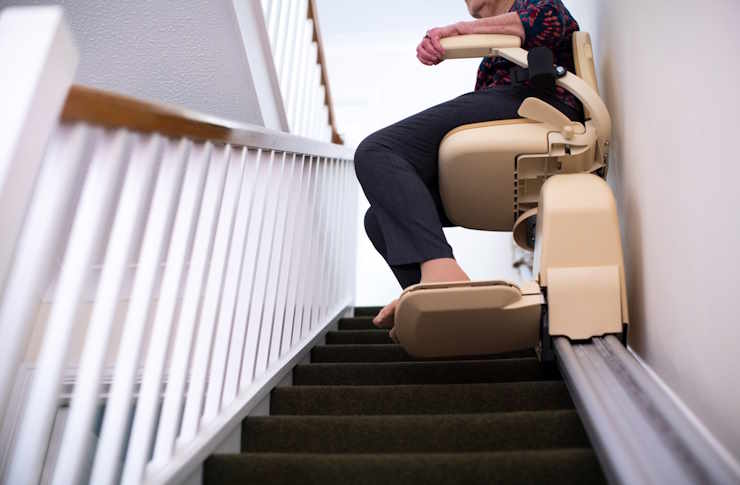How Senior Living Spaces Are Evolving with Two-Room Designs
The landscape of senior housing is undergoing a significant transformation as developers respond to changing preferences among older adults. Two-bedroom designs are becoming increasingly prevalent in senior living communities, offering residents more space, flexibility, and opportunities for maintaining independence while enjoying the benefits of community living.

The evolution of senior housing reflects broader changes in how we view aging and retirement. Today’s seniors are more active, independent, and discerning about their living arrangements than previous generations. As a result, residential homes for seniors are adapting to meet these changing expectations, with multi-room designs becoming a prominent feature in modern senior living communities. This shift represents more than just additional square footage—it signifies a fundamental rethinking of how senior living spaces can better support quality of life, dignity, and continued engagement with family and community.
Why Two-Bedroom Designs Are Gaining Popularity
The growing demand for two-bedroom units in senior housing developments stems from several key factors. Many seniors are downsizing from larger family homes but still desire adequate space for their belongings and lifestyles. Two-bedroom configurations allow residents to maintain a dedicated guest room for visiting family members, especially grandchildren, enabling meaningful family connections without the stress of accommodations. Additionally, many couples entering senior living communities have different sleep schedules or health needs, making separate bedrooms a practical solution that supports relationship harmony while addressing individual requirements.
Innovative Features in New 2-Bedroom Senior Homes
Modern two-bedroom senior apartments are incorporating thoughtful design elements that specifically address the needs of older adults. Open floor plans with wider doorways and hallways accommodate mobility devices while creating a spacious feel. Many new developments include universal design features like zero-threshold showers, adjustable-height countertops, and strategic lighting that enhances visibility and reduces fall risks. Smart home technology is increasingly standard, with voice-activated systems allowing residents to control lighting, temperature, and security features with minimal physical effort. These innovations collectively create living spaces that can adapt to changing needs while maintaining an attractive, non-institutional aesthetic.
How Communal Spaces Complement Private Two-Room Designs
While private living spaces expand, senior housing developments are simultaneously reimagining communal areas to create comprehensive living environments. Today’s residential homes for seniors feature restaurant-style dining facilities, fitness centers with specialized equipment for older adults, and multipurpose rooms that host everything from art classes to visiting lecturers. Outdoor spaces often include walking paths, gardening areas, and comfortable seating for socializing. This balance between private two-bedroom residences and thoughtfully designed common areas allows residents to choose between solitude and community engagement based on their daily preferences and needs.
Financial Considerations for Two-Bedroom Senior Accommodations
Two-bedroom units typically command higher monthly fees than studio or one-bedroom options in senior living communities. The price differential varies widely depending on location, amenities, and the level of care provided. In urban areas, two-bedroom senior apartments may cost 20-30% more than single-bedroom units in the same community. Many communities offer different payment models, including entrance fee structures with reduced monthly payments or rental arrangements with no large upfront commitment.
| Housing Type | Average Monthly Cost Range | Typical Square Footage | Common Additional Fees |
|---|---|---|---|
| Independent Living (2BR) | $3,500 - $6,000 | 900-1,400 sq ft | Community fees, dining packages |
| Assisted Living (2BR) | $5,000 - $8,000 | 800-1,200 sq ft | Care level charges, medication management |
| CCRC Two-Bedroom | $4,000 - $7,000 monthly + entrance fee | 1,000-1,500 sq ft | Healthcare reserves, amenity fees |
Prices, rates, or cost estimates mentioned in this article are based on the latest available information but may change over time. Independent research is advised before making financial decisions.
How Senior Housing Developments Are Adapting to Market Demands
Senior living providers are responding to market research showing that today’s seniors prioritize independence, privacy, and space. Many new 2-bedroom senior homes are being constructed with flexible layouts that can be modified as residents’ needs change. Some developers are creating hybrid communities that combine independent living units with higher levels of care, allowing residents to remain in their two-bedroom homes while receiving increasing support. Marketing approaches have evolved as well, with communities emphasizing lifestyle benefits rather than care aspects to appeal to active seniors who don’t identify with traditional senior housing stereotypes.
Future Trends in Multi-Room Senior Living Spaces
The future of senior housing appears to be moving toward even greater customization and flexibility. Some innovative residential homes for seniors now offer modular designs where interior walls can be reconfigured as needs change. Technology integration continues to advance, with telehealth capabilities built into new developments to facilitate remote medical consultations. Environmental sustainability features are becoming more common, with energy-efficient systems that both reduce costs and appeal to environmentally conscious seniors. As baby boomers continue to enter retirement age, their preferences will likely drive further evolution in two-bedroom and multi-room senior living options.
The transformation of senior living spaces through two-room designs represents a significant shift in how society approaches housing for older adults. By providing more space, privacy, and flexibility, these evolving residential options honor the dignity and individuality of seniors while still offering the community connections and support services that enhance quality of life. As design innovations continue and market demands evolve, senior housing will likely continue moving away from institutional models toward more homelike, personalized living environments that truly support successful aging.




